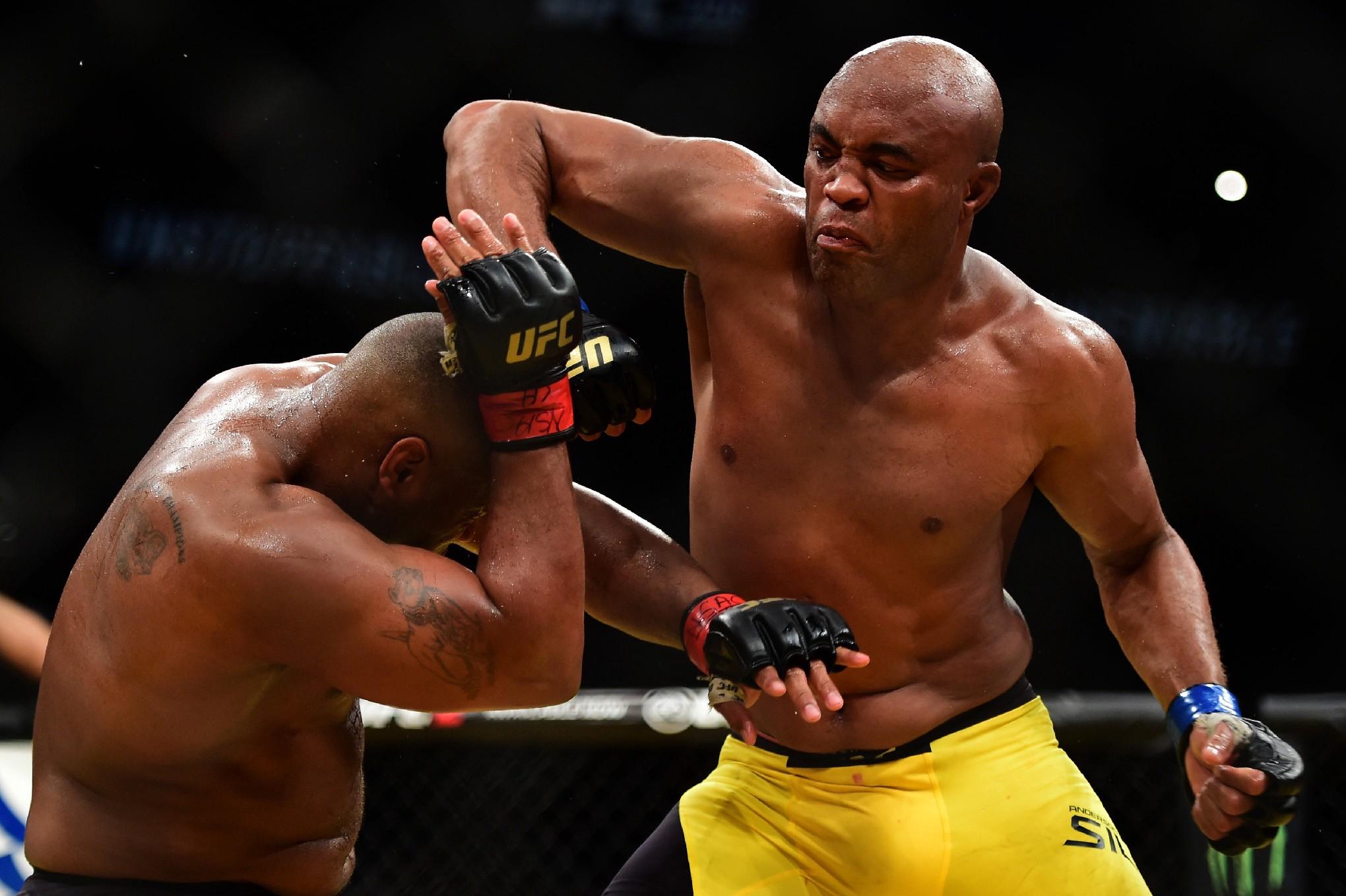
Though UFC 200 was under construction for a full year, it’ll go down in history as a night of wild improv. It was born of outsize expectations, and never truly got beyond the guessing game it started out as. Last week, when the UFC made Miesha Tate’s title fight with Amanda Nunes the new main event — after Ronda Rousey fell out early, Conor McGregor got removed from the card later, and Jon Jones was jettisoned at the eleventh hour — people got to nudging ribs, saying, You know how to make a Nunes-Tate fight memorable? Have Rousey step into the octagon and challenge the winner.
There was that kind of vibe in play the whole way through; that the UFC would keep improvising, one-upping itself, right up until the end.
Yet even as her specter hung over the event, Rousey never appeared. (Her boyfriend, Travis Browne, fought against Cain Velasquez on the main card and lost in the first round.) Nunes closed the show by becoming the fourth champion in the women’s bantamweight division in less than a year. It was a convincing win, suited for the big bicentennial event, but mostly UFC 200’s final act left us with the idea that the 135-pound title has become a hot potato — worse yet, a hot potato for which Rousey might not have an appetite. Not exactly mind-blowing stuff to leave off on.
Still, UFC 200 probably will be remembered more for its unique pairings, its golden canvas, and its comebacks than it will for its new champion.
Brock Lesnar, who was only added to the card as bonus material when Jon Jones was still the headliner, showed up as the old pestle against Mark Hunt after four-and-a-half years away. He won the fight, but nobody was sure if it was a one-off, or if the crossover WWE star was really back — if it was a tune-up, or a farewell. Jose Aldo beat Frankie Edgar in what was essentially a sweepstakes bout to fight featherweight champion Conor McGregor. Now it remains to be seen if McGregor, who was sitting cageside on Saturday night, will actually go back to 145 pounds after his rematch with Nate Diaz at UFC 202 in August.
If there was an unlikely hero at UFC 200, it was 41-year old Anderson Silva, who was dredged up on two days’ notice to face Daniel Cormier after Jones was popped for a banned substance by the U.S. Anti-Doping Agency. On a card that was never anything other than a work in progress, Silva’s presence felt fitting. Here he was showing up, an out-of-left-field savior with a thousand miles of legacy, to stand in against a heavyweight wrestler who was all but guaranteed to beat him. That bit of courage (or lunacy) translated well on a night that needed the idea of two non sequiturs throwing down.
It translated well, too, because … well, that’s never been Anderson Silva.
For years, Silva — the game’s most sublime striker — was the bogeyman of the middleweight division, defending the title 10 times between 2007 and 2013. He was hard to pin down, though, always a little finicky when it came to the matchmaking process. To get Anderson Silva to sign on wasn’t always the easiest task. If you asked him who he’d like to fight, he’d say his clone. If you asked him if he thought Chris Weidman was the right challenger for his belt, he would sing the merits of Cung Le. If you asked him about Chael Sonnen, his English suddenly got spotty. He was smart in navigating his career. Silva knew a good matchup, just as he knew a bad one.
For him, wrestlers were bad ones.
So seeing him step in to fight the Olympic wrestler Cormier on no notice, as if consequences meant nothing to him, was novel — or crazy. The Silva at close of day, it turns out, is the Silva we wanted all along. The sellout crowd at the T-Mobile Arena in Vegas cheered some spirit of this thought. Even as he was having his ghost squeezed out of him by Cormier for three rounds, he was exorcising lingering demons from UFC 90 (when he showed up more pacifist than fighter), from UFC 97 (when he punched at Thales Leites’s thighs), and from UFC 112 in Abu Dhabi (when he mocked and taunted Demian Maia throughout the match, as if caught between performance art and a nervous breakdown).
Maybe it was because he was standing in for the pariah Jones, but Silva out on his fool’s errand brought people over to his side. Suddenly they wanted him in the role of 41-year-old monkey wrench in the works, and you could feel the crowd getting drunk on the thought of him winning. People wanted Twilight Silva to be that agent of chaos, to do the unthinkable — to give UFC 200 something ridiculous and historic.
Of course, Silva wasn’t going to beat Cormier, who had trained for two months in preparation for Jon Jones. Cormier knew wrestling was Silva’s kryptonite, and that he could take Silva down at will whenever he wanted to. The roughly 18,000 assembled knew he could do that, too, which is why they turned Cormier into a villain in the fight, for doing something so despicably smart and obvious. Cormier was booed mercilessly for using his head.
Yet, in those moments when Silva stood and found space to operate, the imagination came to life. That liver kick he hit Cormier with at the end contained the only real drama in the fight, and it got a little dizzy in the arena for a moment. Silva brought the crowd to its feet. On a card that was forever in the making, it was the last piece added that got the biggest pop.
Silva didn’t win, but he came away a winner. He gave the crowd something to cheer for.
Chuck Mindenhall is a senior writer at MMA Fighting.